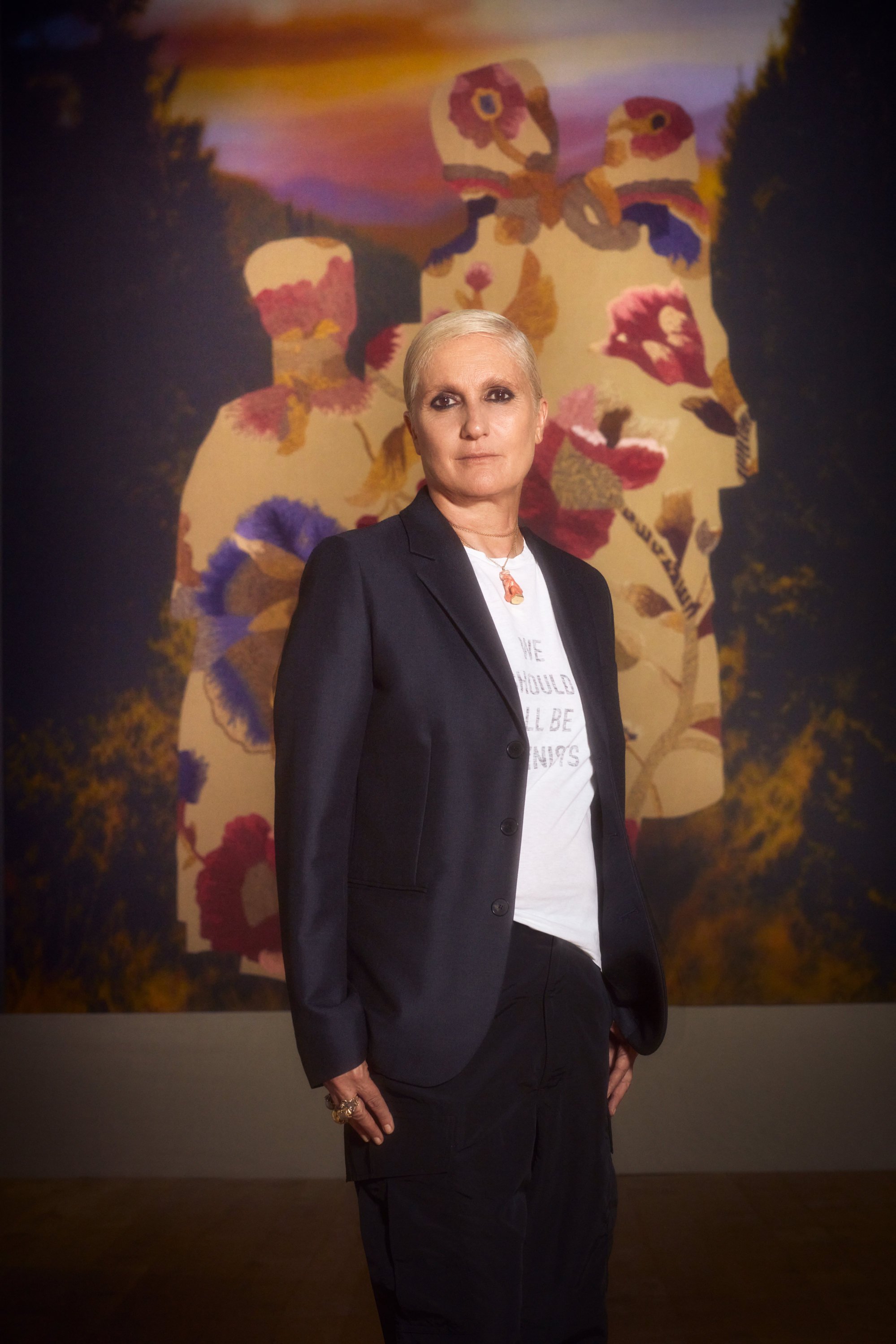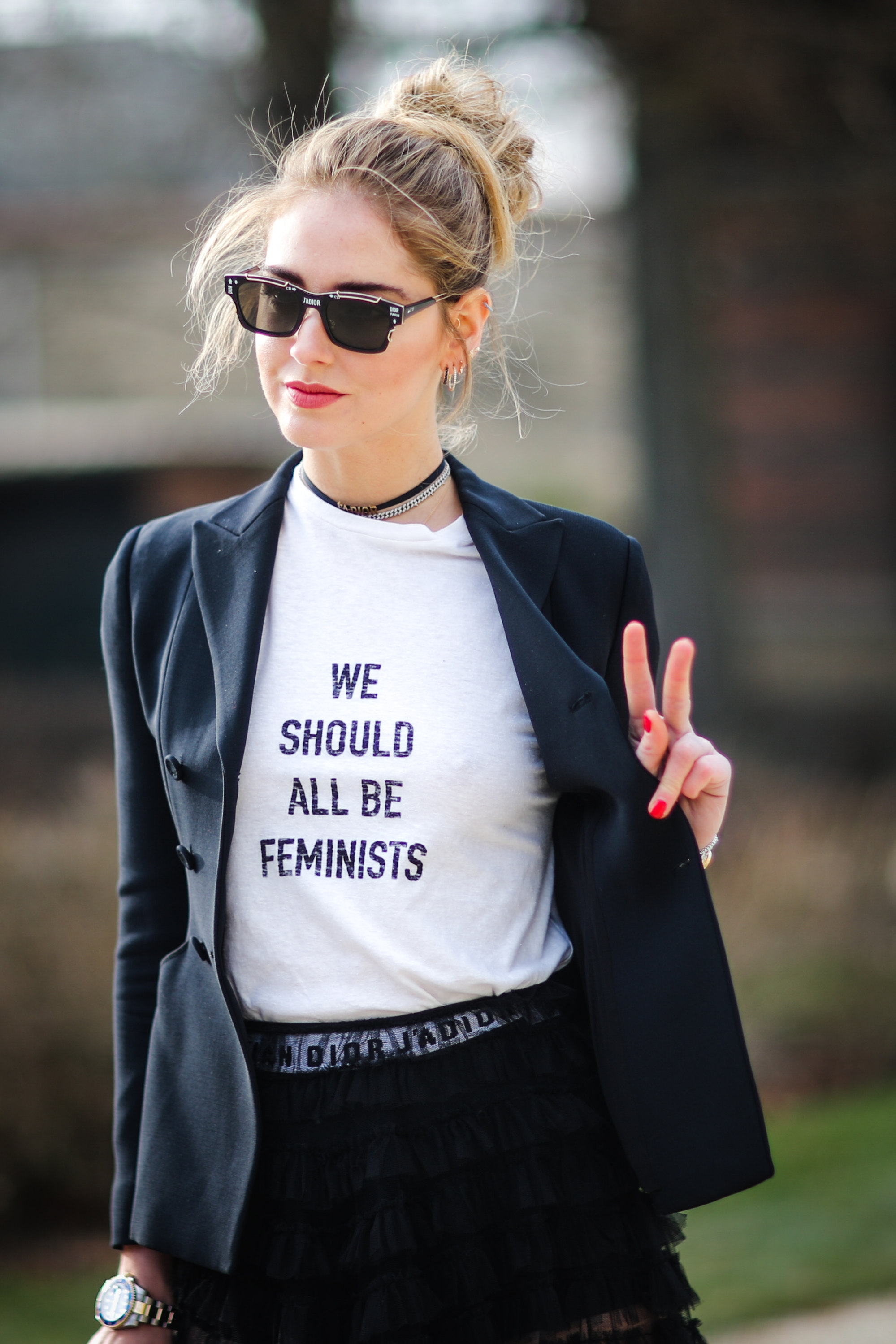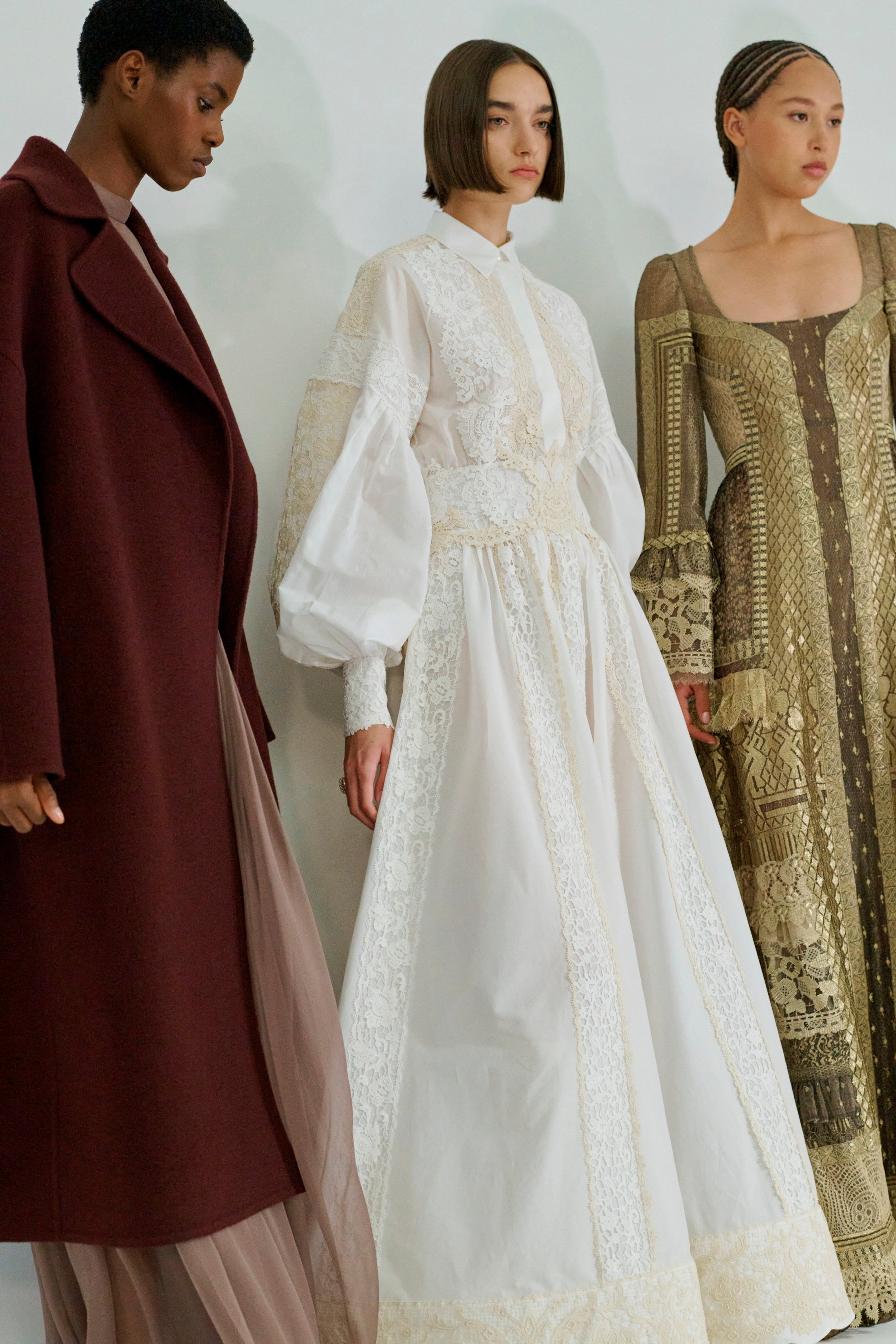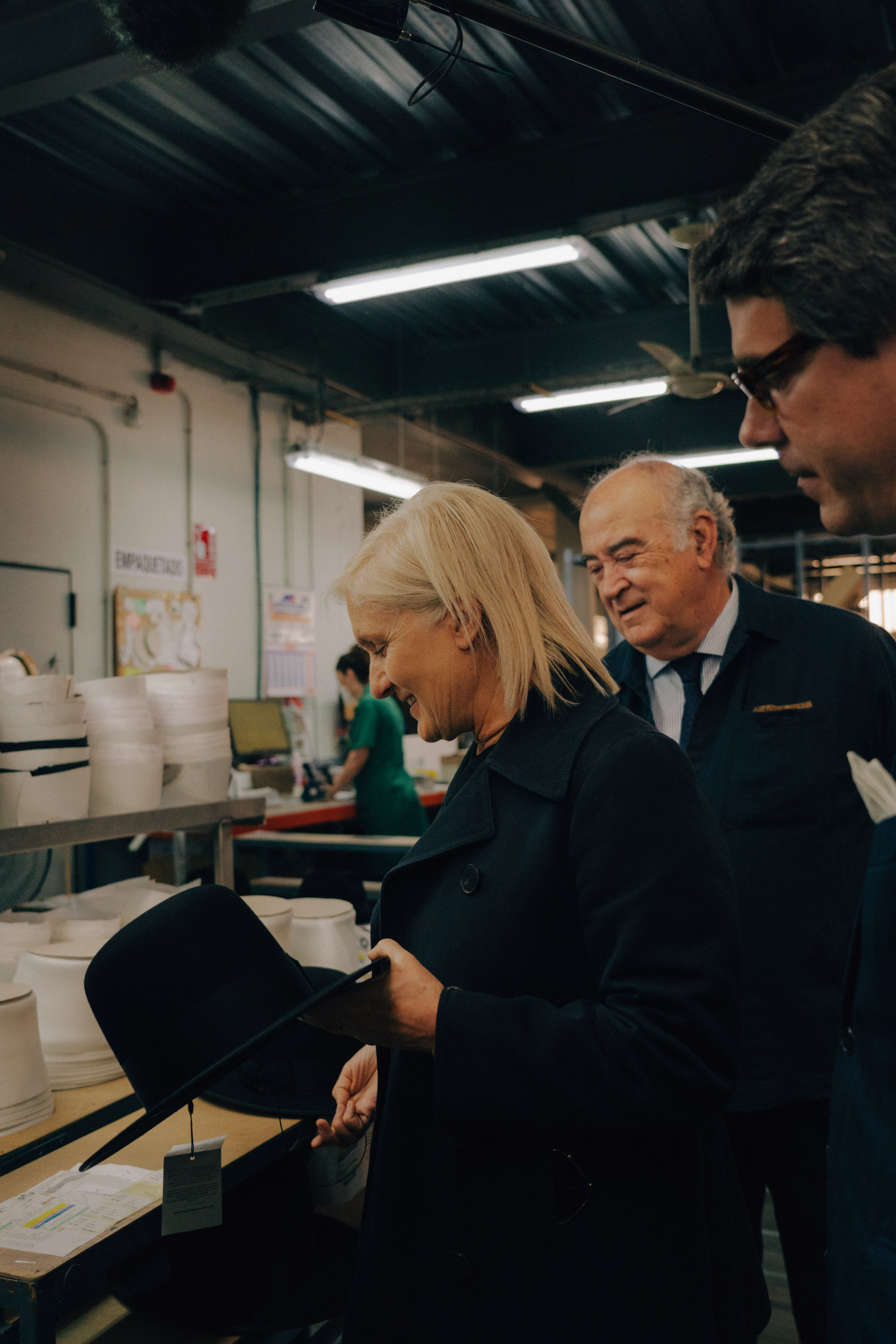
Profile | Dior’s artistic director Maria Grazia Chiuri on working at the pinnacle of a male-dominated fashion industry, and inclusivity in haute couture
- Maria Grazia Chiuri has elevated Dior to an international powerhouse as artistic director, but says success doesn’t always mean due respect for women in fashion
- Promoting women’s rights and hosting shows in under-represented places are some of the ways she’s brought Dior out of the patriarchy and into the 21st century
Since taking over as women’s artistic director of Dior six years ago, designer Maria Grazia Chiuri has turned the LVMH-owned label into a commercial juggernaut, which you’d think would earn her plenty of praise.
Fashion, however, is a funny world, one where unbound creativity – often of the male kind – gets all the attention at the expense of commercial success, even though making clothes that women actually want to wear should be the ultimate seal of approval.
The crown jewel of luxury group LVMH – owner of brands such as Louis Vuitton, Bulgari and Givenchy – Dior has always been the more refined and elegant sibling to mega brand Louis Vuitton.
Less ostentatious and very Parisian, Dior, like Chanel, is one of the few houses that make haute couture, that rarefied niche devoted to one-of-a-kind, custom garments made in Paris and purchased by a handful of clients who can afford dresses worth hundreds of thousands of dollars.

Before Chiuri’s arrival – and that of her partner in crime, CEO Pietro Beccari, who joined the label not long after her appointment – Dior was known for its elegance and refinement, what the French call bon chic, bon genre, a specific aesthetic rooted in Parisian allure and a tad old-fashioned and snobbish.
Chiuri, who had worked at Italian brands Fendi and Valentino, didn’t waste time in changing things when she joined the house.

“I arrived in Paris and the first thing I saw at Dior was how isolated the brand was from the world, with this attitude of navel-gazing,” she says, when we meet at the Dior headquarters in Paris during the haute couture shows in early July.
“The studio was full of closed doors, something I had never experienced before. I literally opened the doors to have a different conversation with the ateliers and to create a real team.
Working with the Fendi sisters really helped me achieve that at Dior, because back then it was a spirit of team and sisterhood. Fendi was a matriarchal company; it was always ‘us’ never ‘I’.”

Chiuri made the concept of womanhood a central theme at Dior from day one. Her first show, spring/summer 2017, famously featured a T-shirt emblazoned with the words “We Should All Be Feminists”, taken from an essay by Nigerian author Chimamanda Ngozi Adichie.
That’s when the griping among fashion insiders began. Why mix politics and fashion? What does a fashion designer selling ultra-expensive clothing know about feminism? That was before the #MeToo movement and the wave of social activism embraced by many companies in recent years. Chiuri, however, doesn’t feel vindicated.
She just says that the motive behind that gesture, which she has followed with plenty of similar ones throughout her tenure at Dior, originated from her own experience as a woman working in fashion.

She recalls how when her appointment at Dior was announced, all the headlines focused on her being the first female to helm the brand while completely ignoring her résumé.
“It was as if I had never been a creative director before,” she says. “I have known this industry since I was 20. I’m 58 now and I know how hard it is for a woman to make a name for herself in fashion and in other creative fields because there is still the stereotype of the male creator and male genius.
It’s a patriarchal culture even though I had the luck to work with the Fendi sisters and I also had many female role models in my family, coming from the south of Italy.”

Chiuri, however, did not champion her cause just by placing slogans on €700 (US$680) T-shirts. She has made a point of collaborating with female artists for many of her collections and of hiring female talent for campaigns and other high-profile projects.
“The first campaign I did was with Brigitte Lacombe, one of the top photographers in the world, who had never done a fashion campaign or a fashion shoot,” she says. “It’s not a coincidence but a flaw in the system.”
She explains that her bias has led to some criticism but she wouldn’t have it any other way. “I made those choices consciously,” she says. “Now it’s a bit different because many brands and magazines use female photographers.

I believe that in an ideal world you should just pick the person who can best convey that idea and create an image but, objectively, when you see such imparities, you can’t be neutral and have to be biased when making these decisions.”
In spite of the initial backlash, she has stayed the course. “I was in my early 50s and I had reached a certain self-awareness when I joined Dior, and I could make some choices and express my opinion and take some risks because I had nothing to lose at that stage in my life and career,” she says. “It was a privilege, also because Dior is a strong brand.”
Her inclusive approach also translates into her designs, which – cost aside – are accessible and have been snapped up by young women who want to look well put together but not precious, or like they’re trying too hard.

The silhouette that Chiuri has made a signature of Dior – a simple top like a T-shirt or her version of Dior’s Bar Jacket, paired with a long skirt – has become a leitmotif of her work. She has built an entire portfolio of new hero products and collections that may not always earn rave reviews, but never fail to succeed with the toughest judges of all: customers.
“My approach to design comes from my background in accessories, which were my first passion,” she says. “I always say that accessories are objects and not relative to the body and you can mix and match and interpret them the way you like.
I give my point of view, obviously, but then the wearer interprets the look and doesn’t have to follow what I say. Fashion used to be very dictatorial, but now it’s not contemporary to impose a full look.”

Whether she’s designing an everyday bag – such as the bestselling Book Tote – or a couture gown meant for a special occasion, Chiuri sees herself at the service of her clients and loves staying behind the scenes, even while in charge of one of the top fashion labels in the world:
“We come from a world in fashion that has often celebrated the creator as creator. For me it’s not about the school of thought that you have to celebrate yourself when you design a garment, so my approach is less influenced by the media and by [the idea] of the designer as a pop star, which has come with Instagram.”
Chiuri ultimately “was forced to” join Instagram, she says with a laugh. And although she’s not active on the platform, that does not mean that she doesn’t have her finger on the pulse.

Chiuri is also close to personalities such as Chiara Ferragni, the Italian mega-influencer and pioneering fashion blogger (back in the days when blogging was still a thing). She sees the rise of disrupters such as Ferragni as a parallel to what she has been trying to do at Dior.
“At the beginning of her career as a blogger, Chiara wasn’t even invited to shows because that new way of reading and approaching fashion from new generations was seen as an attack on the status quo,” says Chiuri, adding that for her fashion ultimately has to be about “exchange and empathy”.
She has championed those values not just with her activism but also by collaborating with artisans from around the world when holding destination shows in far-flung places such as the Moroccan city of Marrakech, Italy’s Lecce and, more recently, Seville, Spain.

Chiuri says she’s looking forward to exploring the more traditional aspects of Asia, a continent she has only known through metropolises such as Shanghai and Tokyo.
Splitting her time between Paris and her native Italy, where she goes to recharge – “Paris to me is work” – Chiuri is a confident woman who, by acting rather than just talking or obsessively posting on social media, has done more to change current fashion than many of her more famous peers.
She says that growing up in a middle-class family, she always needed to work and still remembers how as a teenager she had an incredible yearning for a pair of patchwork jeans from a store in Rome that her mother wouldn’t let her buy.
That longing for that hard-to-get item is her first fashion memory, she says, a strong desire to buy something and wear it – an urge so simple and yet so vital in turning the wheels of this glamorous machine that is fashion.











